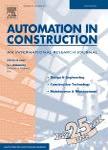版权所有:内蒙古大学图书馆 技术提供:维普资讯• 智图
内蒙古自治区呼和浩特市赛罕区大学西街235号 邮编: 010021

作者机构:Purdue Univ Lyles Sch Civil Engn 550 Stadium Mall Dr W Lafayette IN 47907 USA Tongji Univ Sch Transportat Engn Minist Educ Key Lab Rd & Traff Engn 4800 Caoan Rd Shanghai 201804 Peoples R China
出 版 物:《AUTOMATION IN CONSTRUCTION》 (建造自动化)
年 卷 期:2016年第72卷第Part3期
页 面:237-246页
核心收录:
学科分类:08[工学] 0813[工学-建筑学] 0814[工学-土木工程]
基 金:US National Science Foundation [1017933, 1520338] Directorate For Engineering Div Of Civil, Mechanical, & Manufact Inn Funding Source: National Science Foundation
主 题:Short-term average link travel time estimation Trip based data with partial information Bayesian mixture model Path inference EM algorithm
摘 要:Accurate estimation and prediction of urban link travel times are important for urban traffic operations and management. This paper develops a Bayesian mixture model to estimate short-term average urban link travel times using large-scale trip-based data with partial information. Unlike typical GPS trajectory data, trip-based data from taxies or other sources provide limited trip level information, which only contains the trip origin and destination locations, trip travel times and distances, etc. The focus of this study is to develop a robust probabilistic short-term average link travel time estimation model and demonstrate the feasibility of estimating network conditions using large-scale trip level information. In the model, the path taken by each trip is considered as latent and modeled using a multinomial logit distribution. The observed trip data given the possible path set and the mean and variance of the average link travel times can thus be characterized using a finite mixture distribution. A transition model is also introduced to serve as an informative prior that captures the temporal and spatial dependencies of link travel times. A solution approach based on the expectation-maximization (EM) algorithm is proposed to solve the problem. The model is tested on estimating the mean and variance of the average link travel times for 30 min time intervals using a large-scale taxi trip dataset from New York City. More robust estimation results are obtained owing to the adoption of the Bayesian framework. (C) 2015 Elsevier B.V. All rights reserved.